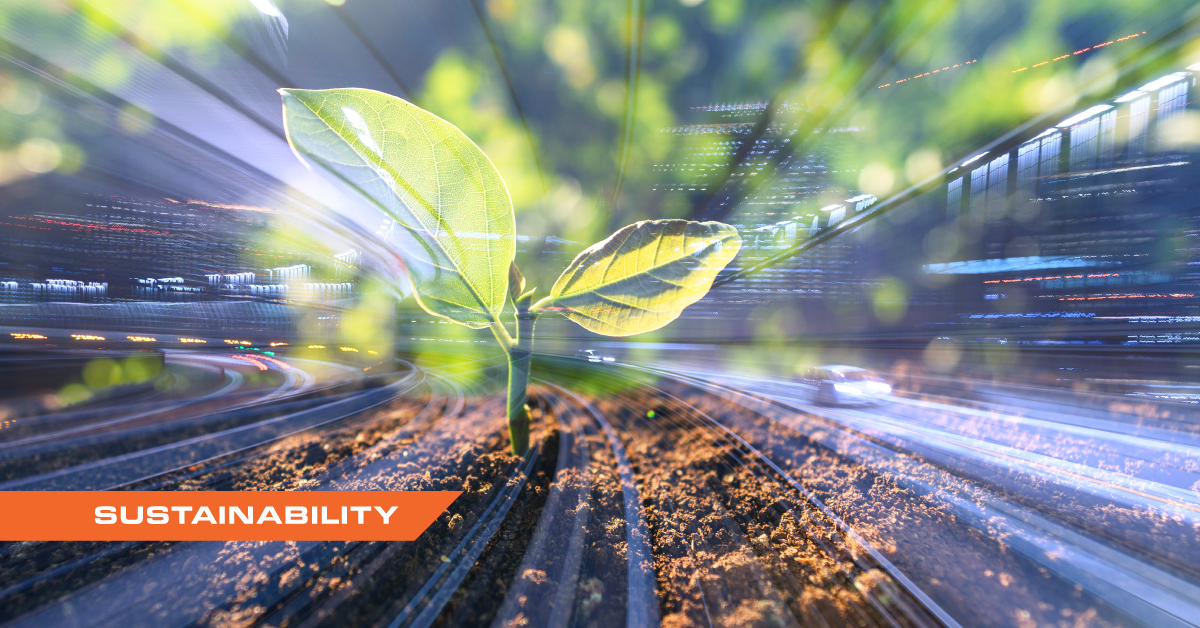Building Sustainable Transit
It’s spring here in the United States, and for many, the season can bring about a buzz of excitement as the flowers bloom. And who wouldn’t be excited about warmer weather? The rising temperatures can inspire dreams of beach vacations, time off with family, or an outside adventure. But the reality reveals that in recent years, the rising temperatures aren’t just indicators of normal seasonal shifts. The EPA states that since 1986, average spring temperatures in the contiguous 48 states “…have increased by about two degrees Fahrenheit.” The other seasons are no exception, with the result crystal clear: the world is getting warmer.
While two degrees might not sound like much, it’s actually extremely significant, with incremental global warming causing drastic shifts across many sectors. The altered averages directly influence precipitation, growing seasons, energy usage, and, of course, they can disrupt the breeding of plants and animals. You might already be aware of the dismal facts, and we aren’t here to discourage you or tell you to stop using plastic straws. (Although, you should probably refrain from using plastic straws if you can.) We’re here to start a bigger conversation around climate, starting with the biggest contributor to greenhouse gases. You guessed it: transportation.
You might have heard it before, and it’s true: in the U.S., the transportation sector is the largest contributor to climate change. According to the U.S. Department of Transportation (USDOT), in 2019, “transportation accounted for 33% of emissions in the United States – and that statistic doesn’t even account for the full lifecycle of transportation-related emissions, Although this percentage has dipped since the 2020 pandemic, numbers are rising and are predicted to continue climbing past pre-pandemic levels – and fast.
So, where do these transport emissions come from? Well, a whopping 72% of global transport emissions come from road vehicles. Aviation and shipping are the next big contributors. The EPA states that in order to reduce overall emissions, it’s necessary to reduce the driving demand. This can be done by building public transportation and incorporating lower-emission mass transit choices, like that of rail and electric buses. The problem is that existing systems simply aren’t cutting it. Not only is there a lack of reliable low-emission mass transit, but these systems are not physically built to withstand climate change, or built with sustainability in mind. Not to mention, many of these systems aren’t reliable, safe, or practical for the passenger.
USDOT confirms that “…rising temperatures, fires, droughts, flooding, and severe weather that are exacerbated by climate change are already putting stress on the nation’s transportation infrastructure.” And just this week, TRIP, a nonprofit transportation research organization that works with government agencies, released their Maryland traffic report. It, too, states that extreme weather and environmental conditions “may threaten the condition and longevity of the nation’s transportation infrastructure.”
So, where do we go from here? While low-emission transit options might seem out of reach, USDOT is dedicated to mitigating climate change in the transportation sector. And although public transportation might sound intimidating or even impossible for some, we at Northeast Maglev are also working hard to make mass transit not only accessible, but fast, reliable, safe, and sustainable.
The Superconducting Maglev (SCMAGLEV) train will operate at 311mph in a dedicated guideway. With the first phase taking passengers from Washington D.C. to Baltimore in just 15 minutes, and ultimately from D.C. to New York City in just an hour, the SCMAGLEV will not only revolutionize regional travel, but it proposes a sustainable alternative for many. By taking cars off the road and promoting fully electric rail travel, “the SCMAGLEV is projected to actually reduce overall mobile source air emissions regionally.” And with eventual stops at multiple international airports, the train will encourage travelers to swap out a short-haul plane ticket (which are environmentally damaging), for a seat on the SCMAGLEV.
Furthermore, the Draft Environmental Impact Statement confirms that SCMAGLEV stations will generate benefits to surrounding communities, to include “decreased travel times and improvements to health, safety, and the environment.” The stations will also “encourage mode shifts (for example, from automobile to pedestrian, bicycle, or transit) for local trips, decreasing auto emissions and improving air quality.” So, not only will the system benefit passengers, but it’ll also provide tangible benefits to those not riding the train.
And an added bonus of the SCMAGLEV system is that it will operate in a dedicated guideway — infrastructure that will be constructed with current and future climate concerns in mind. This means that the SCMAGLEV will not be as threatened by environmental degradation as many current rail and roads are.

So, while things may seem bleak, be assured that the Northeast Maglev team is working hard to make sustainable mass transit a reality here in the United States. And when it comes to aiding the environment, remember that every little bit counts. Our team recently participated in The Mayor’s Day of Service here in Baltimore, where we showed our appreciation for the city and its residents by picking up litter on Earth Day. We’re here to support the planet now, not just when the SCMAGLEV arrives. And if you’re unable to reduce your personal driving demand or participate in environmentally friendly events, try to enjoy the warm weather, and hop on board the petition to bring the SCMAGLEV to the Northeast Corridor. Our growing population needs the SCMAGLEV, and so does our planet.
